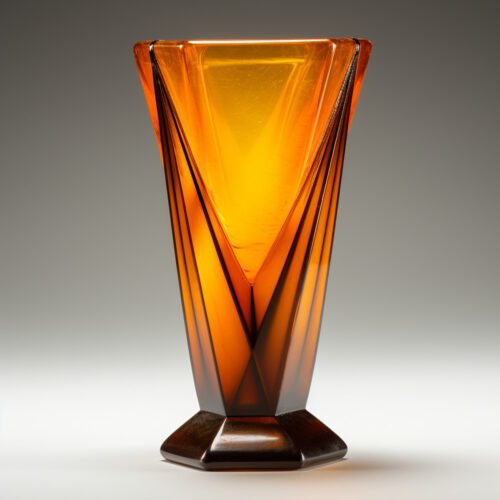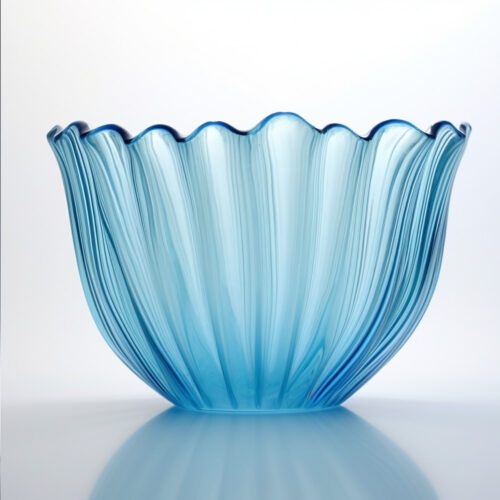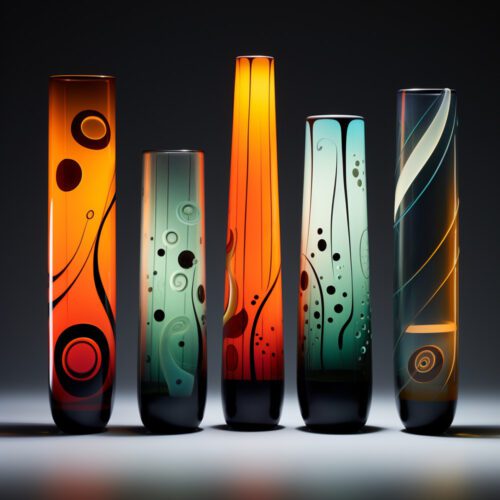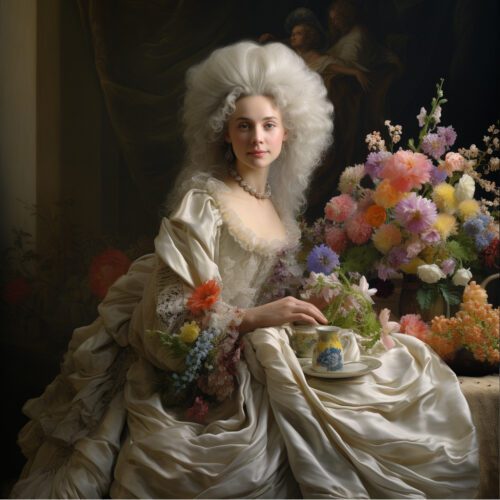Within the glassblowing community, the name Bagley Glass is both distinctive and highly valued. This British glass firm has been producing beautiful glassware that has won the hearts of collectors and enthusiasts all around the world for more than...
Within the glassblowing community, the name Bagley Glass is both distinctive and highly valued. This British glass firm has been producing beautiful glassware that has won the hearts of collectors and enthusiasts all around the world for more than a century. A remarkable voyage through time, creativity, and artistic expression is the Bagley narrative.

Bagley Beginnings
William Bagley and his three sons, Arthur, John, and Walter, established the Bagley Glass Company in Knottingley, West Yorkshire, England, in 1871.
William Bagley had previously worked at a nearby glassworks, so he was no stranger to the glass sector. His ideas and skills created the groundwork for a family business that would prosper for many generations.
When the business first started out, it focused on making window glass and glass bottles, which were quite popular in the Victorian era. The Bagley family, however, had higher aspirations in mind.
Their early vision would soon propel their advancements as they recognised the possibilities for creative and ornamental glassware.
Art Deco and the Rise of Bagley
When the Art Deco style was at its height in the 1920s, Bagley Glass really saw a sea change. At Bagley, this design era—which was marked by geometric forms, vivid colours, and avant-garde materials—inspired a creative rebirth. The company started concentrating on beautiful and ornamental glassware instead of practical glass items.
The “Berserker” vase is among the most famous Bagley Art Glass designs from this period. Reginald “Rege” Myatt, who was instrumental in developing Bagley’s Art Deco style, created the Berserker vase. It demonstrated the fine artistry that would come to be associated with Bagley, with a startling blend of coloured and transparent glass.
In addition to vases, Bagley also designed bowls, figures, and candlesticks as part of his Art Deco style. Their glassware immediately became well-liked by customers as a result of praise for both its aesthetic appeal and practicality. The sophisticated Art Deco patterns fit in perfectly with the changing fashions of the era.
Myatt’s contribution was crucial in making Bagley a household name in the ornamental glass industry. His creative ideas and the mastery of Bagley’s artisans set the company up for success in the glassware sector.
Depression Glass Era
Businesses around the world faced a new set of difficulties during the Great Depression of the 1930s.
Like many others, Bagley Glass had to adjust to the downturn in the economy. Bagley debuted a new range of Depression-era glass products at this time, appealing to the period’s penchant for thrift.
Depression-era glass was frequently produced with striking hues and understated yet sophisticated designs. The “Sunburst” and “Iris” patterns in Bagley’s Depression-era glass collections captured the essence of the time. These reasonably priced glass pieces were popular because they offered households both beauty and use during hard times.

WWII and Beyond
Many businesses, notably the glass industry, were forced to shift their output in order to help the war effort as World War II raged across Europe. And Bagley was no different. The business turned its attention to making glass parts for the military, like searchlights and aviation instrument lenses.
Bagley Glass had additional difficulties when it returned to producing goods for civilian use after the war. The world was moving into a new period of design and aesthetics, and the need for ornamental glassware had decreased. Still, the Bagley family and their hardworking crew never wavered in their devotion to their trade.
In the post-war years, Bagley introduced new designs and patterns, adapting to the changing tastes of consumers. One of their most iconic lines was the “Equinox” series, which featured exquisite bowls and vases known for their timeless elegance.
In the 1950s, Bagley Glass merged with other notable glassmakers, including Jobling Glass and Davidson Glass, forming the British United Glass Company (BUGC). This merger allowed the company to pool resources, talent, and experience, ensuring its continued success in the glass industry.

Legacy and Collectability
Long into the 20th century, Bagley Glass kept up its glassware production, producing exquisite pieces that have endured. Currently, Bagley Art Glass products are highly sought after by collectors and enthusiasts who value the company’s heritage of fine craftsmanship and design. In particular, collectors now highly prize and seek out their Art Deco and Depression glass items.
The history of British glassmaking is still demonstrated by the Bagley Glass brand, which demonstrates the company’s flexibility in responding to changing conditions without sacrificing its dedication to quality and innovation. The company’s artistic and design contributions to the world of glass continue to be honoured by museums, collectors, and lovers of exquisite glassware.
In summary
The tale of Bagley Glass demonstrates the continuing legacy of a family-run enterprise that began as a modest glass factory in Knottingley, West Yorkshire, and developed into a well-known glass manufacturer hailed for its inventiveness and artistic expression. Bagley made a lasting impact on the glass art world, from its early days of making window glass and bottles to the famous Art Deco and Depression glass periods.
Even with the difficulties brought on by global events and economic downturns, Bagley prospered and kept making exquisite glassware. The company’s lasting success can be truly attributed to its ability to adapt to changing conditions while upholding its dedication to excellence.
A well-known brand in the glassware industry today, Bagley Art Deco and Depression glass pieces never cease to enthral admirers and collectors. Bagley products’ timeless beauty and usefulness guarantee that their heritage will endure for many more centuries.
For more information about Bagley Glass, there is a great book by Angela Bowey which is available on Amazon Books
Do you have your own Bagley Art Glass Collection? Please send us your pictures, and we will post them here. Just drop a comment below and we will email you back. Thanks!












